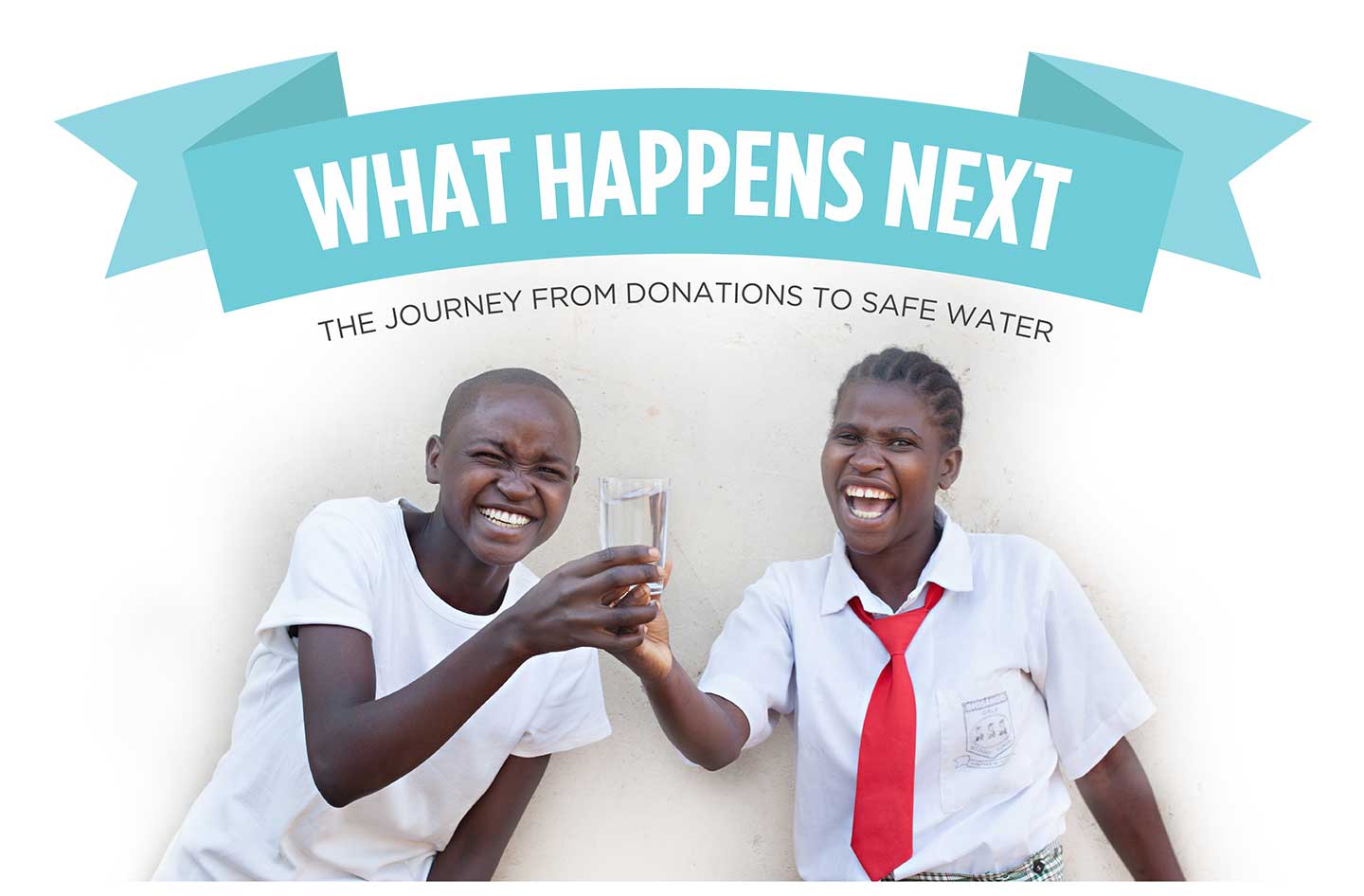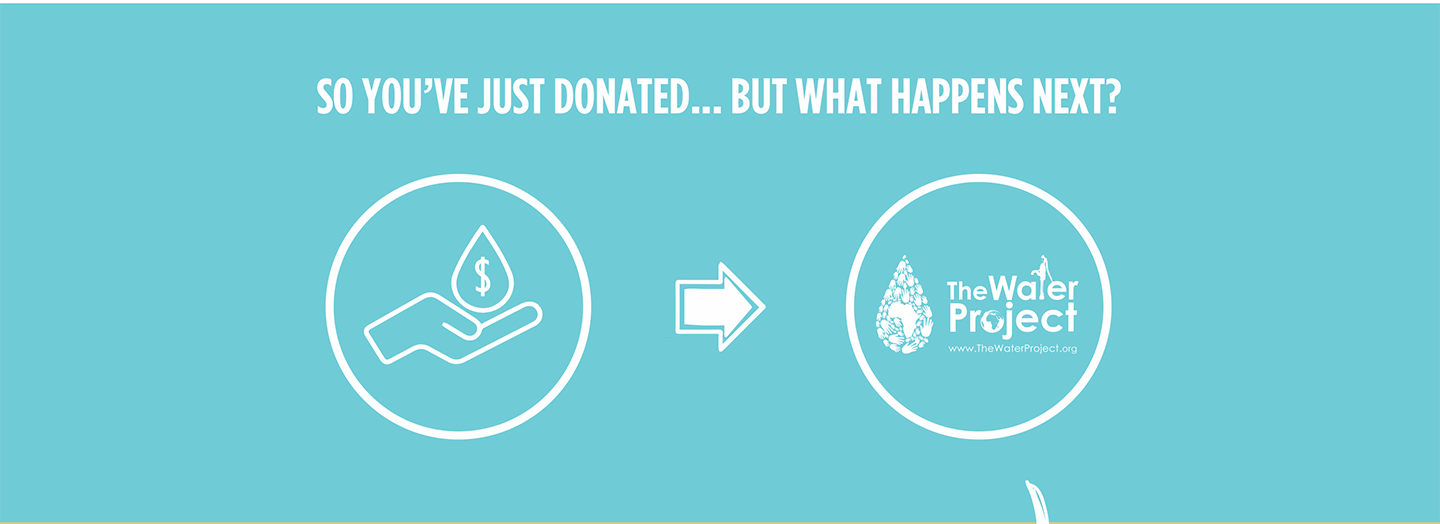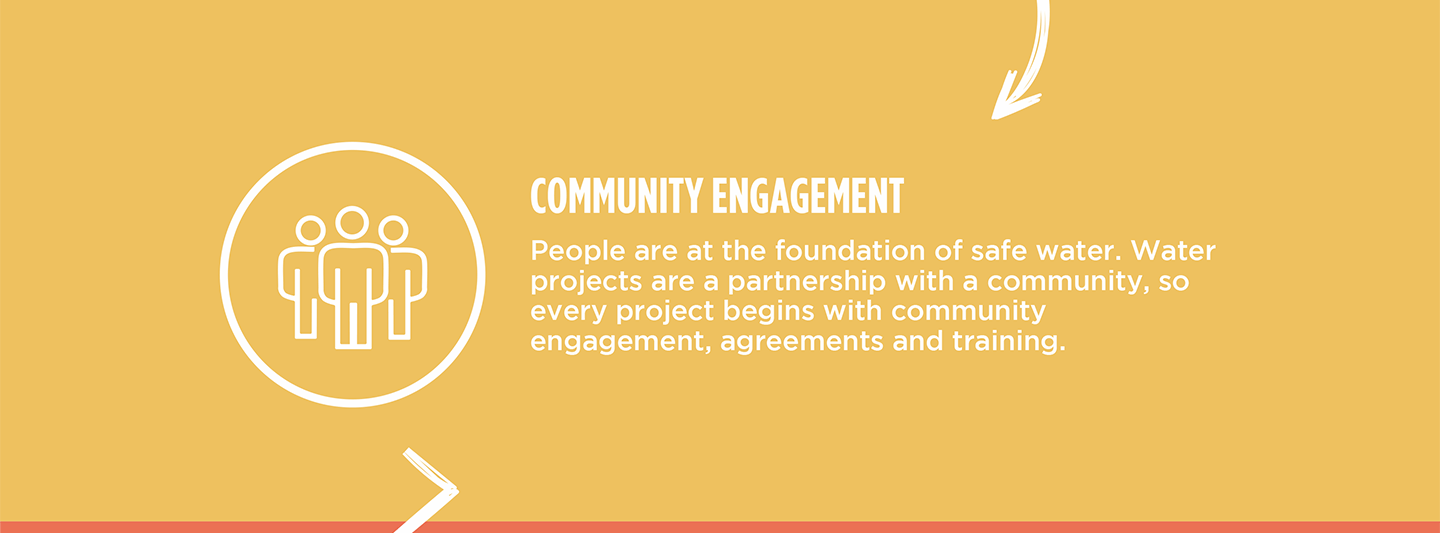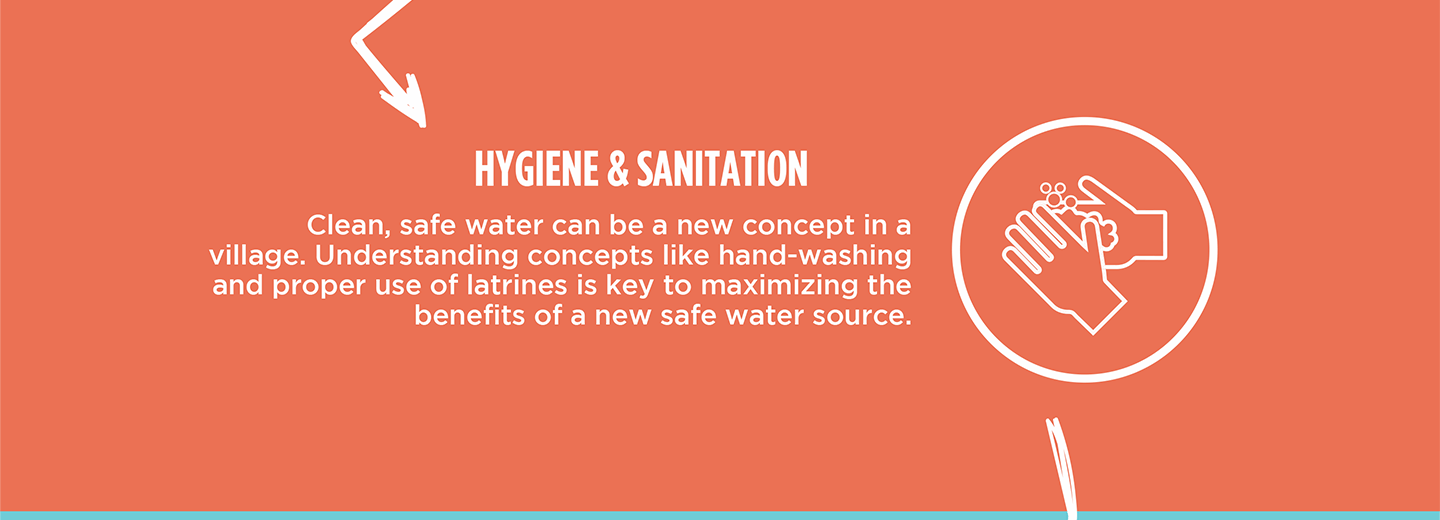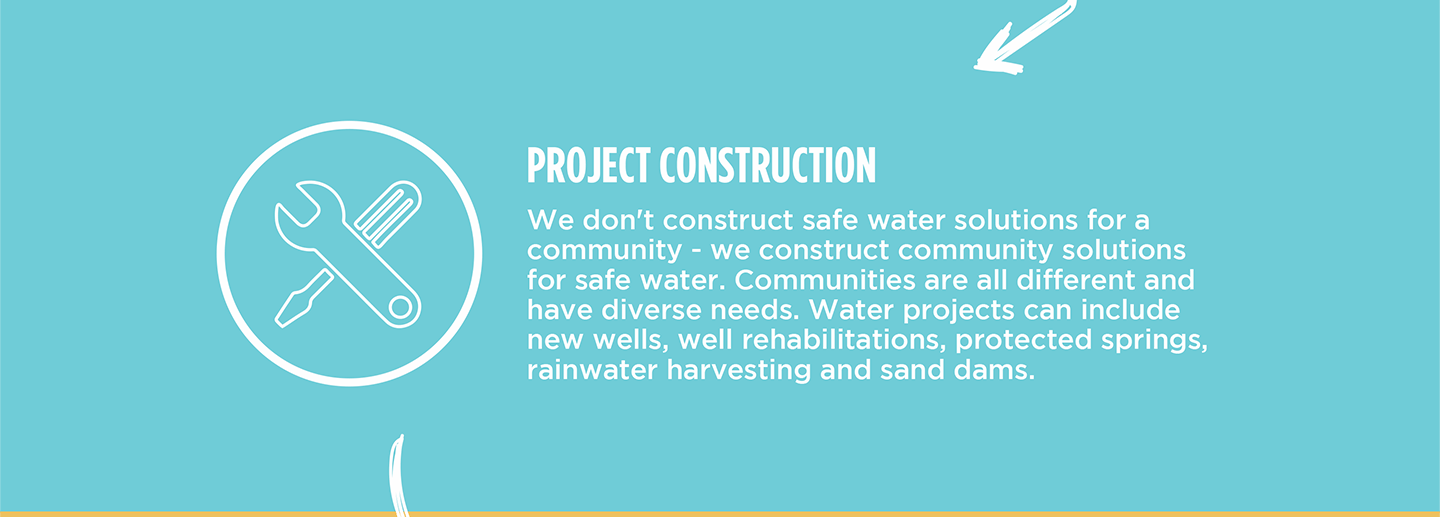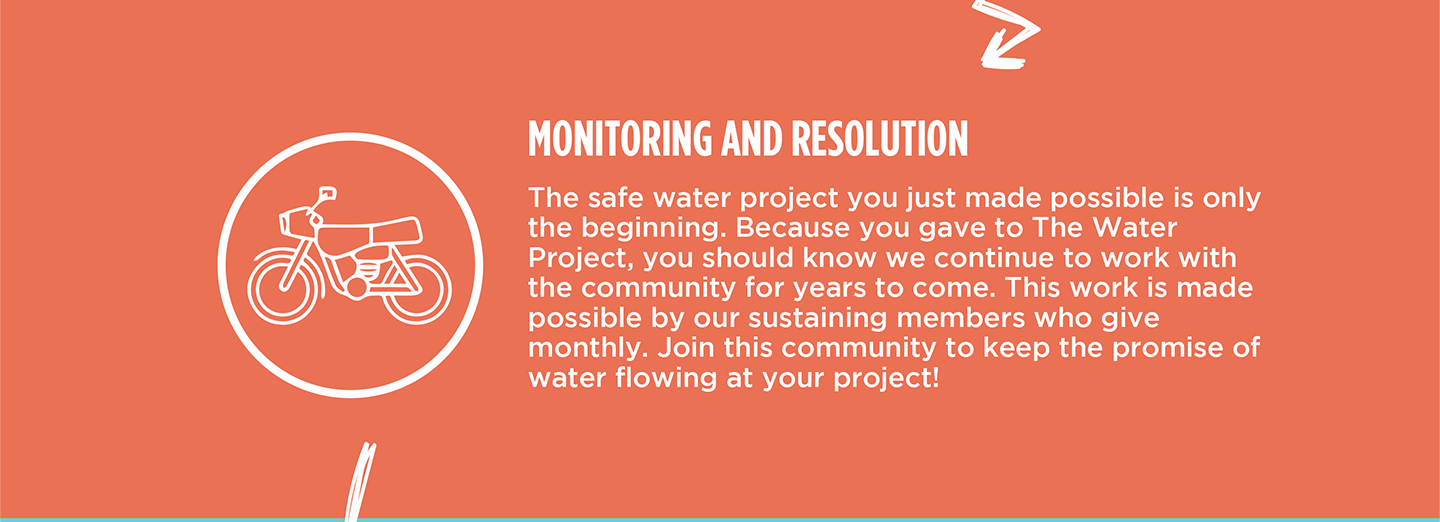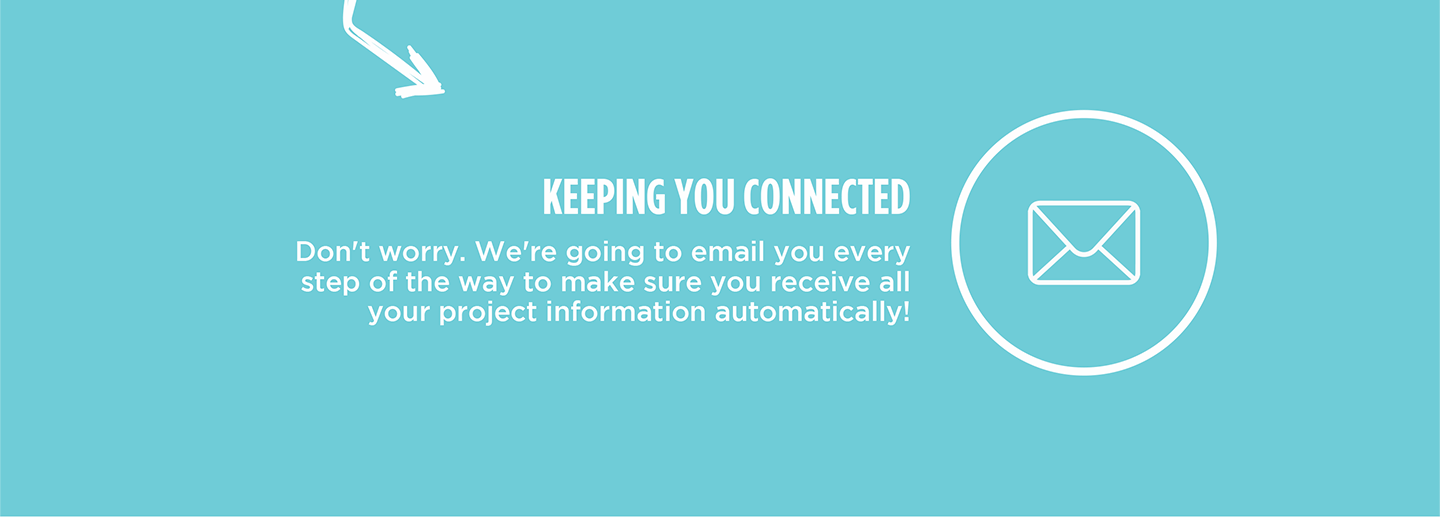The 275 community members of Kihara Nyakasojo struggle each day to collect sufficient water to meet their daily needs. The unprotected well, where most community members collect water, is over an hour away. It is a physically demanding task that steals their time and energy.

Community members make the long trek to collect water.
"The road is hilly, which makes the journey exhausting. During the rainy season, it becomes slippery and difficult to access, and they also have to pass through a sugarcane plantation," shared Field Officer Bena Nakabiri as she described the journey.

Community members wait for their turn at the faraway well.
But it is not just physically demanding. It also steals from other parts of their lives.
Although he is quite young, 10-year-old Julius carries the burden of collecting water for his family and knows the high cost of that responsibility.
"I feel frustrated, especially when I don’t have a bicycle. Carrying water on my head is exhausting, so I can only bring one jerrycan per trip. With a bicycle and help from someone pushing, I could carry two or three jerrycans at once," said Julius.
Collecting enough water for his family often requires several trips after school, leaving little time for anything else.

"The long distance makes fetching water exhausting, and since my siblings are still young and unable to go to the water point, I am always the one who has to fetch water," Julius exclaimed.
It is a burdensome way for young Julius to live.
"I am concerned about my safety because I often go to the water point late in the evening after school and return home late, yet the access road is unsafe due to passing through the sugarcane plantation. I often don’t have enough time to read my books since I spend a lot of time fetching water from a long distance," he lamented.

Like most children, Julius wants to be a child and dreams of a bright future.
When we asked him what he looked forward to when a well is installed near his home, he said, "I will be able to access water at any time without having to travel long distances or pass through unsafe areas. I will have time to play football, [and] I will also have time to read my books. I will be able to help my parents with household chores."
By installing a well, Julius and the other community members will have access to a safe, reliable water source nearby, which will open up the doors of opportunity. This will be critical for Julius in fulfilling his dream of becoming a doctor one day.
Steps Toward a Solution
Our technical experts worked with the local community to identify the most effective solution to their water crisis. They decided to drill a borehole well, construct a platform for the well, and attach a hand pump.
Well
Abundant water often lies just beneath our feet. Aquifers—natural underground rivers—flow through layers of sediment and rock, offering a constant supply of safe water. A borehole well is drilled deep into the earth to access this naturally filtered and protected water. We penetrate meters, sometimes even hundreds of meters, of soil, silt, rock, and more to reach the water underground. Once found, we construct a platform for the well and attach a hand pump. The community gains a safe, enclosed water source capable of providing approximately five gallons of water per minute. Learn more here!
Community Education & Ownership
Hygiene and sanitation training are integral to our water projects. Training is tailored to each community's specific needs and includes key topics such as proper water handling, improved hygiene practices, disease transmission prevention, and care of the new water point. Safe water and improved hygiene habits foster a healthier future for everyone in the community.
A Community-Wide Approach
In Uganda, we use a Community-Led Total Sanitation (CLTS) approach, which involves several meetings where community members evaluate their own hygiene and sanitation practices to encourage lasting change. During these sessions, natural leaders emerge, motivating the community to recognize and change unhealthy behaviors that affect everyone.
Communities then commit to ending open defecation before we install the water project. Every household builds a latrine to prevent disease and improve hygiene and sanitation in anticipation of their new water source. To support this effort, a Community Development Officer (CDO) is assigned. The CDO encourages each household to set up handwashing stations, animal pens, garbage pits, and dish-drying racks. These additions are crucial in preventing the spread of common diseases.

 Borehole Well and Hand Pump
Borehole Well and Hand Pump
 Rehabilitation Project
Rehabilitation Project










